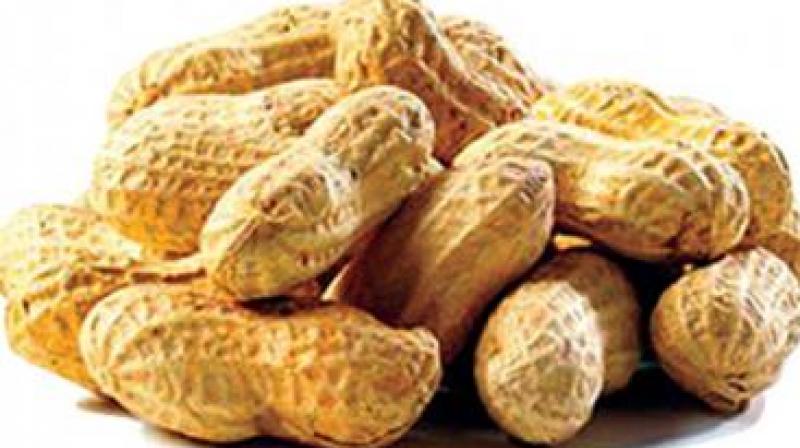Pesticides have impacted taste of groundnut

Anantapur: The heavy use of pesticides in the last two decades has lowered the quality of the groundnut crop in Anantapur district, one of the country's top groundnut producers. The nutritional value of groundnut is equal to that of cashew nut.
The district administration of Anantapur district and several NGOs working in the district are trying to get farmers to do organic farming and cut down pesticide use.
Manjunath, a farmer from Madakasira, says he not now using pesticides for his groundnut crop. “We are using cow dung, neem oil and cakes instead of chemical fertilisers and pesticides,” he said. The taste of groundnuts he produces is improved due to natural fertilisers, he adds.
Timbact Collective, an NGO from C.K. Palli mandal in Anantpur district has been encouraging groundnut farmers to use natural methods of farming. The NGO buys groundnut seed from farmers and produces pure groundnut oil through a natural oil extraction process. Timbact has a sales outlet at CK Palli.
Groundnut scientists from the International Crops Research Institute for the Semi-Arid Tropics (ICRISAT) and its partners across India have just developed the first-ever oleic-rich peanut in Spanish and Virginia bunch types, adapted to Indian farm conditions.
Soon Indian grown peanuts could replace tons of imported peanuts from Australia.
The oleic-rich peanuts from Australia is branded as 'heart friendly' because it has more than 80 per cent of oleic acid; indigenous varieties of groundnut have 45-50 per cent of oleic acid.
Until now, Indian groundnut farmers have not benefited from the fast growing global confectionary market, as they could not supply high oleic content peanuts as required by the confectionary industry. Currently, Indian groundnut farmers grow bunch type groundnut varieties adapted to rain fed environments, early maturing, and with rapid filling of the pods after flash rains. Such groundnuts are however low in oleic acid.
Certain groundnut varieties grown in America and in Australia are much richer in oleic acid (above 80%) thanks to specific mutations in the gene coding the enzyme fatty acid desaturase or FAD, which blocks the conversion from oleic acid to linoleic acid.
The food industry wants peanuts with a high oleic content as they have tenfold lower oxidation compared to normal peanuts, improving the shelf-life of the product from two to nine months. It avoids rancidity and the peanut itself has a much better flavour.
Oleic acid or omega-9 fatty acid which can be found in olive and nuts like almonds also has important health benefits, a study revealed.
At present, multinational confectionary companies are sourcing high oleic peanuts from Australia for their Asian processing units in order to respond to the growing Asian market for peanut-based confectionary products like chocolate bars and breakfast cereals.
Peanuts are used in large quantities locally in food items that use groundnut oil, principal research scientist Dr Naik observed.
Knowing the cost of importing peanuts and the rising global groundnut prices, leading food companies are seeking opportunities to locally source high oleic peanuts from India and other countries in Asia and Africa where they operate. Market demand for high oleic groundnut varieties would improve incomes of many small groundnut farmers if they could produce such varieties.
The strategic market-driven research which produced the high oleic peanut for Indian conditions, is an on-going collaboration between ICRISAT, DGR in Junagadh, Gujarat; Palem Research Station of Telangana State Agricultural University; Oilseeds Department of Tamil Nadu Agricultural University (TNAU) in Coimbatore; Department of Regional Agricultural Research Station and the Regional Agricultural Research Station of Acharya NG Ranga University.

